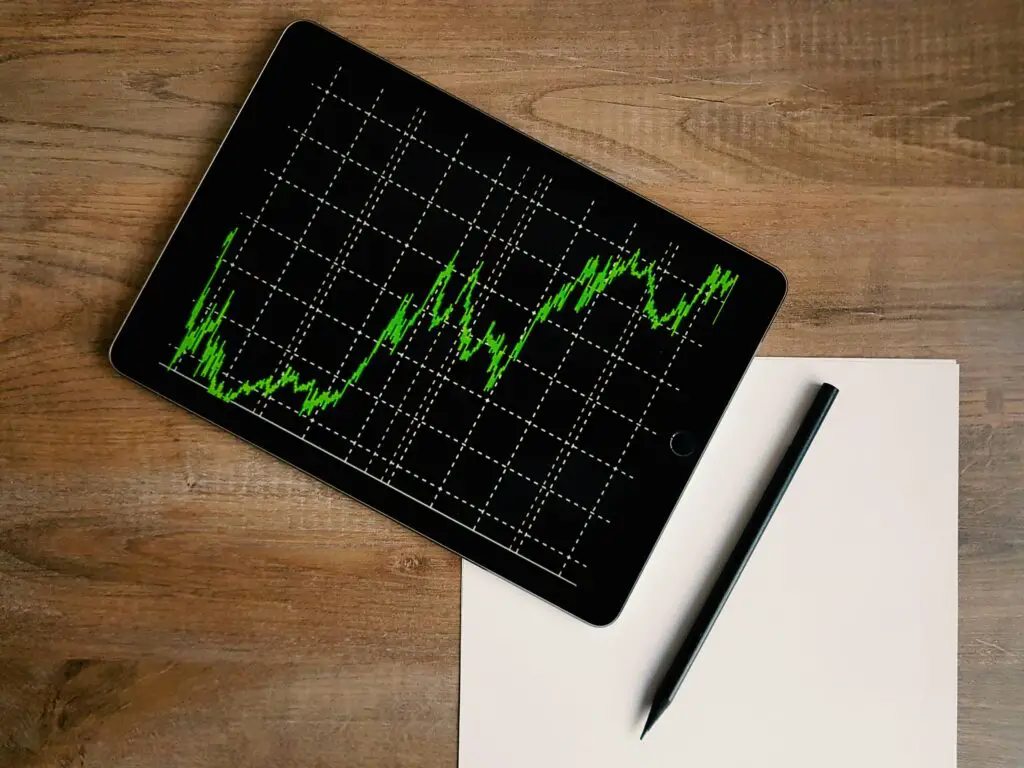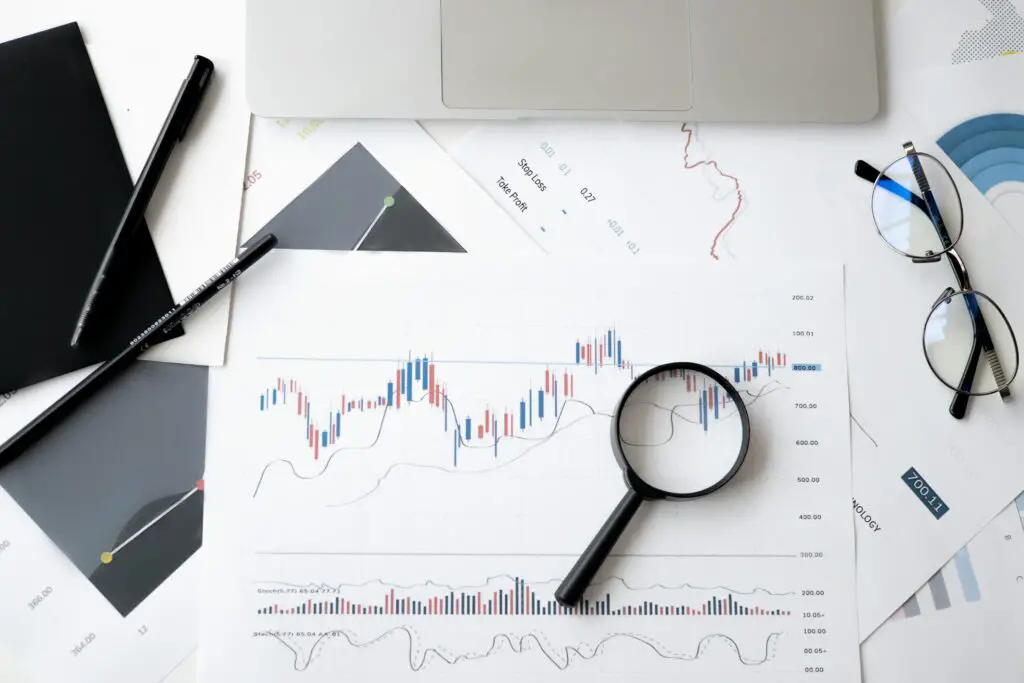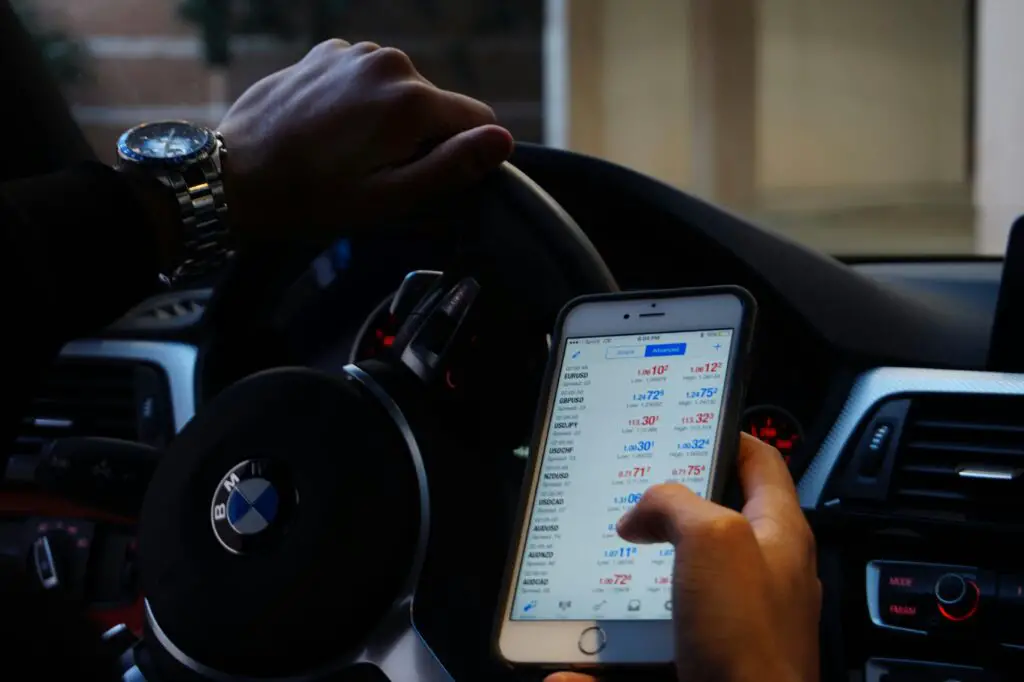A common way to trade is in forex trading, which is buying and selling currencies to make money. A tool traders use to help them decide what to do is the Moving Average Convergence Divergence (MACD). The MACD is a pretty straightforward idea, even though it has a complicated name. You can use the MACD in your forex trading. This guide will show what it is, how it works, and how to use it.

What does MACD stand for?
More specifically, the MACD helps find changes in the size, direction, speed, and length of a price trend in a currency pair.
What the MACD is made of
The MACD is made up of three main parts:
MACD Line: This is made by taking the 12-period Exponential Moving Average (EMA) and removing the 26-period EMA.
Signal Line: This is the MACD Line’s 9-period EMA. It smooths the MACD Line so that the signs are easier to see.
The MACD Line and the Signal Line are not the same. This is the difference between them. This helps you see how the two lines are connected.
What does an Exponential Moving Average (EMA) stand for?
Because of this, it can react to new information better than a simple moving average.
How does the MACD work?
The MACD is a momentum indicator comprising two moving averages that follow trends. This oscillator calculates the difference between two EMAs to show how fast an exchange pair moves. If it is below, it means that the direction is going down.

Line of Signals: The Signal Line helps traders determine when to buy and sell. It might be a good idea to buy when the MACD Line exceeds the Signal Line. If, on the other hand, the MACD Line falls below the Signal Line, it might be time to sell.
The Hexagon
It shows how different the MACD Line and the Signal Line are. The MACD Line is above the Signal Line when the Histogram is above the zero line and below the signal line when it is below the zero line. If the bars are more oversized, the trend will be more robust. If the bars are smaller, the trend will be weaker.
How to Trade Forex with the MACD
To use the MACD well, you must know how to read its signals and include them in your trade plan. Traders often use the MACD in these ways:
Cross overs
When the MACD Line goes above the Signal Line, this is called a bullish crossover (buy signal). It means the price is probably going to start going up.
When the MACD Line goes below the Signal Line, this is called a bearish crossover (or sell signal). It means the price is probably going to start going down.
2. In contrasts
The currency pair’s price makes lower lows while the MACD makes higher lows. This is called bullish divergence. This trend going down might be slowing, and things could turn around and go up.

The price is making higher highs, and the MACD is making lower highs. This is called bearish divergence. The upward trend might weaken, and the price could go back down.
3. Conditions of Oversold and Oversold
Overvalued: The currency pair may be overvalued if the MACD Line is well above the Signal Line. This could be a sign to sell.
Oversold: The currency pair may be oversold if the MACD Line is well below the Signal Line. This could be a sign to buy.
How to Use MACD in Real Life When Trading Forex
Putting the MACD on your chart:
The MACD is a standard indicator in most trading systems. Look for it under “Indicators” in your trading tool and add it to your chart.
Most traders use the default choices (12, 26, 9), which work well with most trading strategies. However, you can change these choices based on how you trade and your time frame.
Looking at the MACD:
Look for crossovers between the MACD and Signal Line to find possible buy-or-sell signs.
To spot possible trend changes, look for price and MACD that are not moving in the same direction.

Check out the Histogram to see how strong the trend is.
Putting together MACD and other indicators:
Though the MACD is vital, it works best when combined with other signal-confirming tools like the Relative Strength Index (RSI) or moving averages. This makes your trade decisions more accurate.
Backdating and Getting Better:
Backrests the MACD on past data to see how it would have done before using it in actual trade. This can help you figure out what its pros and cons are.
Use a test account to get used to using the MACD and build your confidence without putting real money at risk.
How to Use MACD in Forex Trading: An Example
This will help you understand how to use the MACD in forex trading:
An Example Situation
Begin by saying you are trading the EUR/USD set of currencies. The MACD indicator is added to your chart with the options that come with it (12, 26, 9). This is what you see:
Crossover for the Bulls:
The Signal Line is below the MACD Line.
This could mean that you need to buy. You can choose to go long (buy EUR/USD).

Difference:
After some time, there will be a negative divergence: the price of EUR/USD will make higher highs while the MACD will make lower highs.
This suggests that the upward trend might be weakening. You choose to close your long position and keep the money you made.
Crossover in a bearish way:
The Signal Line is above the MACD Line.
This could mean that you need to sell. If you want to sell EUR/USD, go short.
If you do these things, you can use the MACD to make intelligent trading choices and keep track of your positions.
Why using MACD is a good idea for forex trading.
Traders like the MACD for several reasons:
Simplicity: The MACD is simple and easy to use once you understand how it works, even though its name sounds complicated.
Because it is flexible, the MACD can be used when the market is rising or rising.

Early Warnings: The MACD can help traders join and leave positions at the best times by warning them of possible trend reversals.
Combining Trends and Momentum: The MACD uses trend following and momentum measures to give a complete market picture.
What the MACD cannot Do
Even though the MACD is a valuable tool, it does have some flaws:
In other words, they can sometimes send signals after the price has moved.
False signs: The MACD can send out false signals when markets are choppy or moving sideways, which could cause losses.
Not a Tool on Its Own: The MACD works best with other tools and analysis methods to help confirm signs and lower the chance of getting false ones.
How to Get the Most Out of MACD
Here are some things you can do to get the most out of the MACD when you trade forex:
Use with Other Indicators: To confirm signs and improve your trading, use the MACD with other indicators, such as RSI moving averages or trendlines.
Change the settings based on the time frame: Most timeframes work well with the default settings, but you can change the periods to make them work better with the timeframe you are buying.

Keep an eye on divergences: When the price and the MACD differ, it can be a vital sign that the trend might change. Watch out for these trends.
Take Care of Risks: Always use the proper risk management methods, like setting stop-loss orders to keep your money safe. The MACD can help you find trading opportunities but cannot tell you what will happen.
Practice and Backsets: Use demo accounts to keep practicing using the MACD and test your plans on old data to improve your method and boost your confidence.
In conclusion
Remember that no single sign, not even the MACD, can promise you profits. Use it along with other indicators and good trade habits for best results. If you practice and improve, you can use the MACD to improve your forex trading technique and reach your financial goals.

